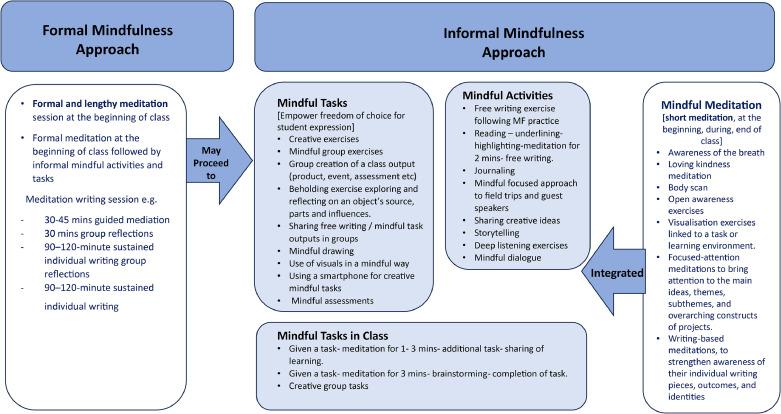Unlocking Student Potential: The Role of Mindfulness in Education for Better Learning
In today’s fast-paced and ever-evolving world, educators and parents are seeking innovative ways to help students thrive academically, emotionally, and socially. One emerging and powerful approach is the integration of mindfulness in education. By fostering self-awareness, focus, and emotional regulation, mindfulness practices can unlock student potential and pave the way for better learning outcomes.In this article, we explore the transformative role of mindfulness in education, highlight its benefits, and provide practical tips for implementing mindfulness strategies in the classroom.
What is Mindfulness in Education?
Mindfulness is the practice of paying attention to the present moment with purpose, openness, and without judgment. When applied in educational settings, it encourages students and educators alike to become more aware of their thoughts, feelings, and bodily sensations. This conscious awareness helps reduce stress, enhances concentration, and cultivates a compassionate classroom environment.
- Awareness: Teaches students to be in tune with their thoughts and emotions.
- Focus: Builds concentration and attention span essential for learning.
- Emotional Regulation: Equips students to handle challenges and setbacks more effectively.
Why Mindfulness Matters in Modern Classrooms
Modern students face unprecedented levels of stress and distraction—ranging from academic pressures to digital overload. Integrating mindfulness exercises in education has proven to be a game-changer for addressing these challenges and creating a supportive learning environment.
- Reduced Stress: Regular mindfulness practice helps lower anxiety and stress in students.
- Improved Academic Performance: enhanced focus and cognitive skills lead to higher academic achievement.
- Emotional Intelligence: Mindfulness fosters empathy, self-awareness, and positive social interactions.
- Behavioral Improvements: Reduces classroom disruptions and improves emotional regulation.
- Resilience: Builds grit and perseverance to handle setbacks.
Key Benefits of Mindfulness for Students
Research has shown that mindfulness in schools can unlock a wide range of benefits for students’ cognitive, emotional, and social progress. Here are some of the main advantages:
- Enhanced Focus & Concentration: Mindfulness trains the brain to stay present, sharpening attention and reducing distractibility.
- Emotional Balance: Students learn skills to manage anxiety, frustration, and other strong feelings.
- Better Memory Retention: A calm mind is more receptive to learning and storing information effectively.
- Improved Social Skills: Mindfulness boosts empathy and positive peer interactions, lowering incidents of bullying.
- Reduced Test Anxiety: Simple breathing techniques help students approach exams with a relaxed mind, improving performance.
Practical Tips: How to Integrate Mindfulness into the Classroom
Bringing mindfulness practices into classrooms doesn’t require extensive training or dedicated class periods. Here are some easy-to-implement strategies for teachers and school leaders:
Start Small with Mindful Moments
- Begin each day or lesson with a 2-5 minute mindful breathing or body scan exercise.
- Use guided audio or video resources to facilitate sessions.
- Encourage students to notice sensations, sounds, and feelings in the present moment.
Mindful Transitions
- Use brief mindfulness breaks between subjects or after recess to help students refocus.
- Try “mindful walking” when moving between classroom areas.
Journaling and Reflection
- Invite students to keep a mindfulness journal where they record thoughts, feelings, and progress.
- Use prompts like “How am I feeling right now?” to cultivate self-awareness.
Model Mindfulness
- Teachers can model mindful behavior by practicing patience, deep listening, and empathy.
- Share your experiences with mindfulness to build a culture of openness and curiosity.
Use Mindfulness Apps and Resources
- Leverage free or low-cost mindfulness apps designed for students,such as Calm or Headspace.
- integrate multimedia content for engaging, age-appropriate mindfulness exercises.
Case Studies: Real-World Success of Mindfulness in Education
Numerous schools worldwide have successfully incorporated mindfulness programs and witnessed remarkable outcomes. Here are two notable examples:
Case Study 1: The mindup program
Developed by The Hawn Foundation, MindUP is a comprehensive mindfulness curriculum used in schools across North America and the UK. Studies have found that students who participate in MindUP demonstrate:
- Notable reductions in aggressive behavior
- Improved attention and executive function skills
- Higher levels of optimism and emotional well-being
Case Study 2: San Francisco Unified School District
The San Francisco Unified School District integrated “Quite time”—a daily mindfulness and meditation practice—in over 30 schools. Key findings include:
- Increased attendance rates and decreased suspensions
- Notable improvements in academic performance
- Stronger student-teacher relationships and classroom climate
First-Hand Experiences: Voices from the Classroom
“After starting mindfulness practices with my 6th graders, I noticed they were calmer, more focused, and kinder to each other. Mindful breathing became a daily ritual that helped us reset and reconnect as a class.”
— Ms. J. turner, Middle School Teacher
“I used to get really nervous before tests. Learning how to breathe and notice my feelings helps me relax so I can remember what I studied.”
— Alex, High School Student
Overcoming Common Challenges
While the benefits of mindfulness in education are clear, some teachers and parents worry about time constraints, lack of training, or resistance from students. Here are some actionable solutions:
- Start Small: Even 1-2 minutes a day can make a difference.
- Seek Professional Development: Many online courses offer mindfulness training specifically for educators.
- Engage Families: Share resources and invite parents to practice mindfulness at home.
- Be Patient: Like any new skill, mindfulness takes time to integrate and show results.
Conclusion: Nurturing Future Success Through Mindfulness
Unlocking student potential is about more than grades and test scores—it’s about equipping learners with the skills and mindsets they need to flourish in all areas of life. Mindfulness in education empowers students to manage stress, focus attention, interact positively, and approach learning with curiosity and confidence. By making mindfulness a regular part of the school day, educators unlock richer learning experiences, stronger relationships, and healthier futures for every student.
If you’re an educator or parent seeking practical ways to promote better learning and emotional well-being, consider embracing mindfulness as a cornerstone of your approach. The journey starts with a single mindful breath—and the ripple effects can transform your classroom and beyond.

